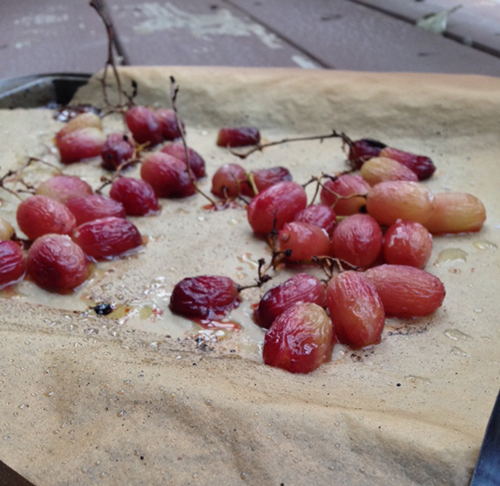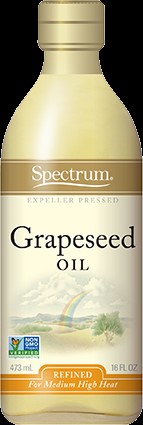 I grew up in a fat-free world: from salad dressings to foundation, nearly all the products I used in my house touted benefits from eliminating fats and oils. Today, though, we can’t seem to get enough fats and oils in our lives. We’re encouraged to use it on our food, our faces, our hair and our nails to sustain the natural balance of oils that keeps us healthy inside and out. Walk into any grocery or beauty store, and you’re likely to be accosted by a variety of potions and elixirs, and some from plants you didn’t even know existed, let alone was oil-producing.
I grew up in a fat-free world: from salad dressings to foundation, nearly all the products I used in my house touted benefits from eliminating fats and oils. Today, though, we can’t seem to get enough fats and oils in our lives. We’re encouraged to use it on our food, our faces, our hair and our nails to sustain the natural balance of oils that keeps us healthy inside and out. Walk into any grocery or beauty store, and you’re likely to be accosted by a variety of potions and elixirs, and some from plants you didn’t even know existed, let alone was oil-producing.
One of the more nontraditional oils showing up on recipe blogs and ingredient lists is grape seed oil. A product of–you guessed it–grape seeds, it seems like a wonder oil if there ever was one. With a high smoke point and a light, clean taste, it can enhance recipes without overpowering the natural flavors of your tasty vegan meals; likewise, it’s not too heavy for sensitive or oily/acne-prone skin. But what are the best ways to use it, and is it all that it’s cracked up to be? Here are some facts to keep in mind before adding grape seed oil to your cupboards.
1. Not all grape seeds are pressed equally! Check your label for an organic cold- or expeller-pressed variety; otherwise, since grapes are not naturally high in oil (unlike olives or walnuts, the sources of other popular oils) grape seed oil is likely extracted via an industrial process that involves high heat and hexane, a chemical that can cause long- and short-term neurological problems in humans. Hexane is also found in certain solvents and cleaning agents, so read your labels on other products as well.
2. Grape seed oil has the highest amount of omega-6 polyunsaturated fat of any oil, which is great in theory. (These oils are essential for brain function and other maintenance systems of the body, like metabolism and skin and hair growth.) However, 70% of grape seed oil consists of omega-6 PUFA, levels that are too high for healthy consumption. Consuming too much of this kind of fatty acid can reverse its positive effects, contributing to inflammation, unbalanced hormones, and a lowered metabolism. The recommended intake of PUFA is 4% or less of your total calories. That means for a 2,000-calorie diet, 80 should come from PUFAs–which means about a 1/2 tablespoon of most oils.
3. One of the true health benefits of grape seed oil is its high vitamin E content: 1 tablespoon has 3.9 mg, vs. 1.9 mg in a serving of olive oil. A natural antioxidant, vitamin E can help improve immunity, reduce cholesterol, and lower cancer risk if consumed; however, given the other negative effects of the fats in grape seed oil, it’s not an ideal oil for cooking. Instead, unleash the power of grape seed oil in your beauty routine. Try using it on nails and hair to promote circulation in the scalp, facilitate the healing process of minor wounds like sunburn and acne scars, and moisturize dry skin and nails. You can buy vitamin E oil on its own (I keep a bottle of Trader Joe’s variety–a little goes a long way!–on my bathroom vanity), or look for products that include grape seed oil in them. Apply straight up grape seed oil to trouble areas on skin or use it as a hair conditioner instead of a store-bought kind.
The verdict? Keep grape seed oil outside the body, not inside, and you’ll reap all its rewards!
Also by Jennifer: 5 Reasons to Be Thankful Wherever You Are
A Day in the Life of a Peaceful Dumpling Editor
6 All-Purpose Uses of Apple Cider Vinegar
Get more like this–sign up for our newsletter for exclusive inspirational content!
Photos: peaceful dumpling; spectrumorganics.com





